During the COVID-19 pandemic, business owners and customers were forced to adopt e-commerce because they had no other option. This gave the process of selling services and goods over the internet a new level of significance. This change is here to stay, which means that opportunities for proprietors of small businesses to flourish online will continue to exist. However, before opening an online store, one needs to understand how everything operates.
The Idea Behind E-commerce Business
The idea of selling and buying of products and services through the use of the internet is known as e-commerce or electronic commerce. On the information superhighway, it is the bustling city center or brick-and-mortar shop rendered in the form of zeros and ones. People buy and sell products in retail through a variety of channels, one of which is e-commerce.
Most companies use e-commerce as a distribution channel to generate revenue besides their physical stores. In either case, e-commerce makes it possible for new businesses of any size—from sole proprietorships to multinational corporations—to sell their products on a global scale and connect with buyers in every corner of the globe.
A Brief History of How E-commerce Started
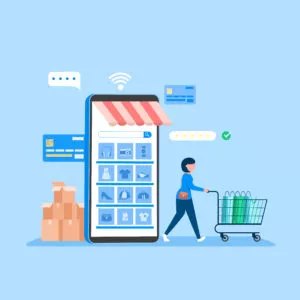
The origins of e-commerce dates back to the early 1990s. The year 1991 marked the beginning of the e-commerce phenomenon, which was sparked by the growing popularity of the online world. Although it took some time, it was available for commercial use earlier than was originally anticipated. Since that time, a great number of companies have relocated their operations to the World Wide Web.
E-commerce rapidly gained popularity around the same time when the internet became accessible to the general public in 1994. It took nearly four years to effectively develop security protocols such as DSL and HTTPS in order to allow for a quick and persistent connection to the internet.
In the year 2000, a great number of companies based in Western Europe and the United States began offering their goods and services via the internet. It was around this time that a shift occurred regarding the term “e–commerce.” After realizing the potential benefits of conducting business online, a number of retailers began making changes to their websites in order to expand their operations into the digital sphere.
At the close of the year 2001, the Business-to-Business (B2B) model had established itself as the most lucrative sector of the e-commerce industry, with revenues of approximately 700 billion dollars. Since that time, online sales have continued to rise, which has resulted in a growth of e-commerce that is unprecedented.
If we look at the expansion of online commerce over the past decade, we can see that, according to Google Trends, it has been relatively stable, with only slight shifts from 2008 up until 2015/2016. Since 2016/2017, however, the trend of e-commerce has begun to grow with a promising incline, and since then, an increasing number of businesses have begun to create their online presence to grow in today’s digital landscape.
People participate in today’s version of e-commerce when they make purchases over the internet with the use of a secure electronic payment system and a payment processing system. The industries of music, books, computers, office supplies, and consumer electronics are producing some of the most successful products currently on the market.
Types of E-commerce
There are as many distinct manifestations of e-commerce as there are distinct online shopping channels to choose from. The following are some examples of common types of business models that are helping to shape the world of e-commerce:
- B2C – Businesses sell to individual consumers (end-users). This most popular model comes in a wide variety of iterations.
- B2B – Business-to-business, which describes transactions between companies. Products are frequently resold by the buyer to the end consumer.
- C2B – Consumer to business where the customers are given the opportunity to sell their products to other businesses through C2B companies.
- C2C – Customer to customer, where the customer sells their products to other customers. Consumers are brought together through the creation of online marketplaces by businesses.
- B2G – Businesses that sell to governments or agencies of governments are known as B2G companies.
- C2G – Customer to government, which refers to sales made by consumers to government agencies.
- G2B – Government to business refers to sales made by governments or government agencies to private companies.
- G2C – Government to customer, which refers to transactions between governments or government agencies and individual customers.
Types of Businesses Related to E-commerce
- Dropshipping
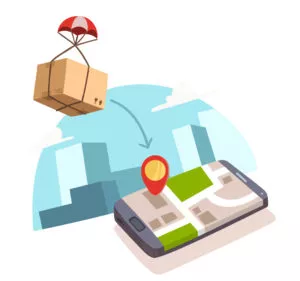
One of the most lucrative business models for online retailers is called drop shipping. When using dropshipping, there is never any need to keep any inventory on hand. The dropshipping business model enables the purchase of a product after the business owner has already made a sale and received payment from the customer. This is possible because dropshipping eliminates the need for inventory storage. After the payment of the product, the dropshipper can make the purchase of the product from a third-party manufacturer or a supplier and then send the product out to the customer without any intervening parties. The store owner does not need to be concerned about ever seeing or handling the inventory if the business is run using the dropshipping model.
- Distribution to Retailers and Warehousing
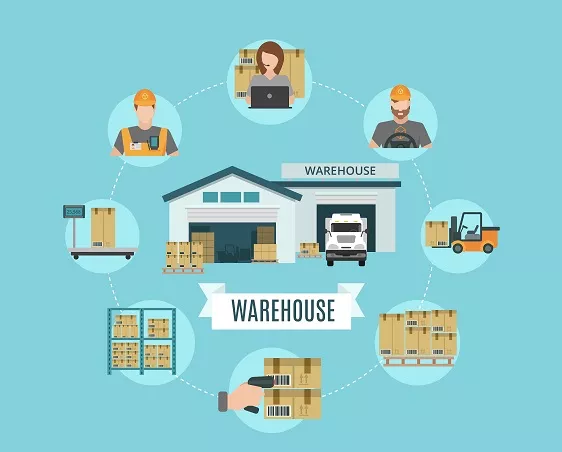
Warehousing is an interesting business model that gives the ability to buy products in large quantities and stock the inventory with them. Since the product is purchased in bulk rather than making a single purchase, the model of doing business known as wholesaling benefits from lower pricing.
The business model, known as B2B, enables the company to engage in high-volume sales of its items for sale. The goods are sold to the retailer by the wholesaler, who in turn sells them to customers for a profit. Companies can also sell the items separately on their website to generate a higher profit margin.
On the other hand, the majority of businesses that deal in wholesale have to generate a sufficient amount of sales volume to make up for the lower profit margins. The model of wholesaling also necessitates significant initial investments for the purpose of purchasing and stockpiling the products.
- Production and Private Labeling (White Labeling)
Since the beginning of time, the manufacturing business model has been consistently successful. This B2B model results in monetary compensation for the production of the goods. When a company engages in white labeling, the product in question is not developed by them from a purely technical standpoint. Instead, they are just licensing it, which gives them the right to put their brand name on it and gives the impression that they are the product’s owner as well as the person who created it.
In either case, utilizing this type of business model will help in maintaining their position at the head of the product chain at all times. They can exercise complete control over the life cycle of the product and can be aware of everything that is happening with it.
In the same way that wholesalers buy products in bulk from manufacturers, they can dropship their products or work with white label drop-shippers who will sell their products on their behalf. This type of business model is not suitable for those who fear making long-term commitments. There is no foolproof method for getting out of a manufacturing contract. So, the manufacturing business model necessitates the implementation of a procedure to monitor and uphold quality control. In addition to this, there is a significant initial financial investment required, so you will need a comprehensive financial strategy.
- Subscription E-commerce
According to the study conducted by Hitwise Retail in 2016, the number of businesses selling subscription boxes increased by almost 3000% between 2013 and 2016. The owners of businesses engaged in e-commerce and traditional brick-and-mortar retailing stand to benefit tremendously from this business model as a result of this opportunity.
In contrast to a conventional e-commerce company, which only conducts one-time transactions, a subscription-based business model enables customers to sign up for recurring shipments of a subscription box by giving them the option to subscribe to one of several delivery plans.
The model of doing business based on subscriptions provides two different value propositions. First, cost savings, and second, increased customer convenience. They only need to place one order, and after that, the products will be sent to them at appropriate intervals, typically once per month.
Customers are able to save money by subscribing due to the nature of this company’s business model. In many cases, the more plans a person subscribes to, the greater the amount of savings they will be able to enjoy.
How To Choose the Best Ecommerce Platform
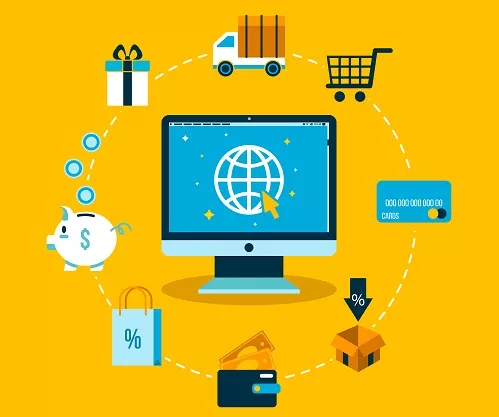
There are certain features that all businesses need in order to be successful online, and these features are not dependent on the type of ecommerce platform that is being used. These are the following:
- Processing of payments: It should come as no surprise that the capacity to accept payments online is absolutely necessary for any e-commerce company. Every platform will provide some method of payment processing, but double-checking is mandatory related to the kinds of payments accepted before using it. There is a possibility that the owner will require a payment processor as well as a merchant account.
- Shipping: Shipping is yet another crucial component of online business. The chosen platform has shipping integrations that are tailored to the needs of the company. If large-sized items are to be sold and shipped via freight, a platform that can integrate with freight carriers is a must.
- Management of stock and supplies: It is essential to keep accurate records of inventory to avoid the risk of overselling or running out of a product. The majority of e-commerce platforms will provide some kind of inventory management, but the level of detail and features provided by each platform will differ.
- Customer management: A good platform for conducting online business should also provide some means of managing customers. This can include things like customer accounts, wish lists, order histories, and loyalty programs. This process is important to provide a positive experience for customers and to keep accurate records of the orders they place.
- Analytics: Understanding the business and identifying areas in which it can be improved is impossible without analytics. Selecting a platform that provides in-depth analytics for monitoring metrics such as the conversion rate, the average order value, the customer lifetime value, and more is important.
- Marketing: Marketing is an excellent tool for bringing customers and making sales at your store. Choose a platform that has marketing features like coupons, emails sent to customers whose carts have been abandoned, and social media integrations.
- Product management: It is essential to have effective management of products in order to maintain accuracy and keep things organized. Check to see that the platform has features like product variants, inventory management, customer reviews, and more.
- Mobile optimization: It is essential to know that an online store is mobile-optimized for seamless functioning on mobile devices. Get a surety that the chosen platform is both responsive and user-friendly on mobile devices.
- Security: It is critical to have adequate security in place to prevent identity theft and protect the personal information of customers. Make sure that the chosen platform has features such as PCI compliance, SSL certificates, and password protection.
- Scalability: The platform chosen should be one that can keep up with expansion plans. Make sure that it can fulfill any potential needs that may arise in the future; otherwise, one might just end up switching platforms in the future. To avoid such a situation, an investment of both time and money before finalizing the platform should be considered.
- Localization: When it comes to localization, choose a platform that’s able to support a variety of languages and currencies to sell products to customers in more than one country. Check that the platform chosen can accommodate the localization requirements.
- Integrations: The platform chosen should integrate with the other software that employs accounting software and customer relationship management software.
Best E-Commerce Platforms of 2023
- Squarespace: Best Overall E-Commerce Platform
- Square Online: Best for Omnichannel Selling
- Ecwid: Best for Existing Sites
- Shift4Shop: Best Free ECommerce Platform
- Shopify: Best for Dropshipping
- Wix: Best Drag-and-Drop Editor
- Weebly: Best Value
- BigCommerce: Best for Boosting Sales
- WooCommerce: Best for Versatility
- Big Cartel: Best for Creatives
Get a dedicated WooCommerce Hosting on Amazon Cloud with Nestify for a robust, uncomplicated, secure, and high-performance platform.
Setting up an Ecommerce Store
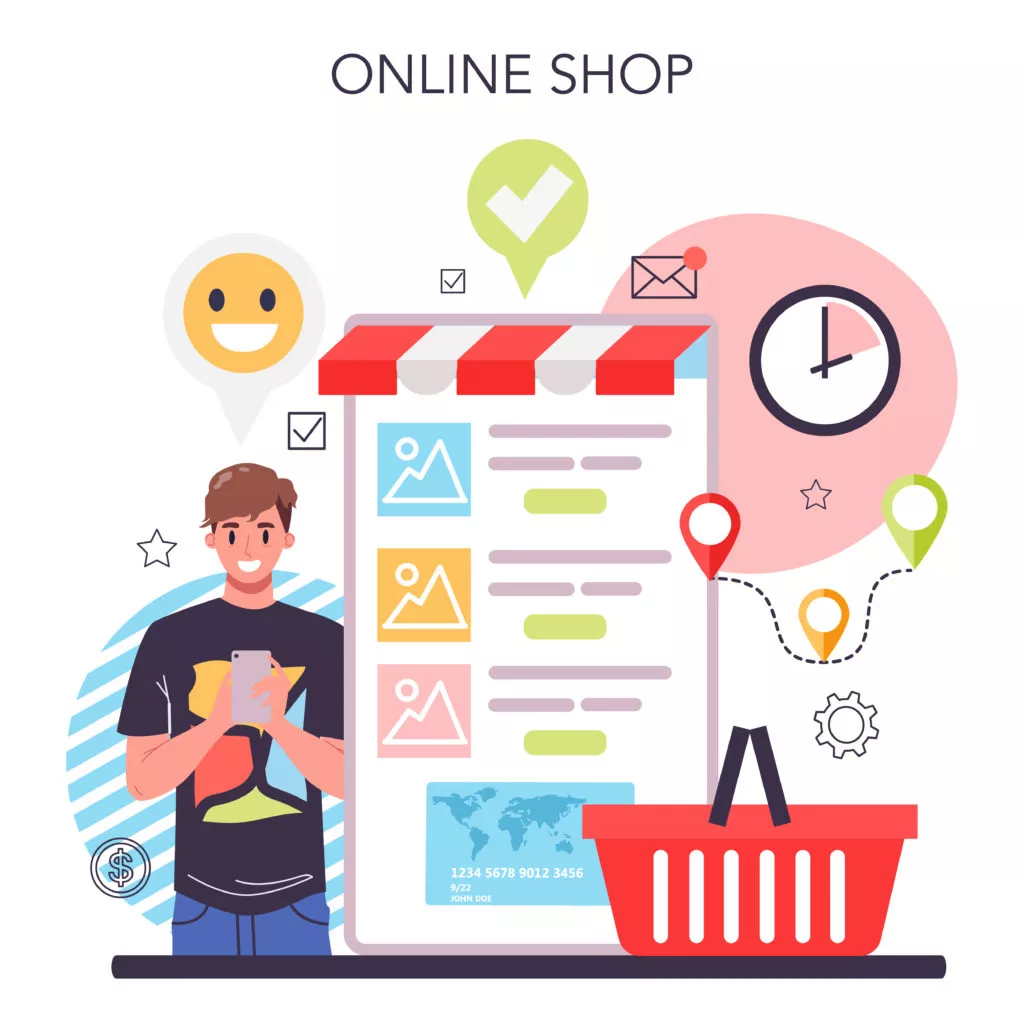
With the right knowledge and resources, it is easy to effectively create an online store in any niche. Here is a list of the prerequisites to take care of:
- Name & Logo
- Securing Domain & Hosting
- Registration and licensing
- Building your store
- Selecting Sales Channels
- Launching your online store
Requirements for Post Launch of an E-commerce Store

Compared to expanding an online business after it has already been launched, setting up an e-commerce store is still relatively easier to do. In order to scale up, there are a few factors to understand. These factors are as follows:
- The Significance of SEO
The importance of understanding ecommerce SEO strategies for business owners cannot be overstated. An online store will be able to rank higher on SERPs and easily attract organic traffic if it has a solid ecommerce SEO strategy. In addition, it is imperative to be aware that people in today’s world are more proficient in technology than ever before, and the majority of them prefer to shop using their mobile phones. It is profitable to make sure that the SEO strategies are mobile-friendly.
- Putting Products on the Market
Listen to what customers have to say rather than trying to force them to conform to the company’s vision of the ideal product. The act of marketing products without collecting data on customers is analogous to driving a car with eyes closed. Marketing strategies ought to be straightforward, easy to remember, appealing to the eye, and entertaining to read. Keep in mind that while a good marketing strategy will make a brand appear intelligent, a great marketing strategy will actually make the customer feel intelligent. When that occurs, it will result in successful sales!
- Content Marketing
Yes, “Content Is King,” so ecommerce content marketing is important. Content marketing is a form of strategic marketing approach, focused on creating and distributing content that is valuable, relevant, and consistent with the goal of enticing and retaining a set audience for a profitable customer action.
Content marketing strategies can increase sales, organic traffic, and conversions. However, the most important of these is likely to be the increase in organic traffic. Producing content in any format will only help customers in some way. Right communication through content can show customers how the product can alleviate the difficulties they face in their daily lives and bring about other positive changes.
- Email Marketing
Email marketing, according to the findings of a research study, offers a return on investment that is four times higher than that of any other medium. Because of this, the method is an extremely effective strategy for generating more sales and profits. This makes it possible that the pre-planned marketing game is nothing but formidable.
- Increasing Conversion Rates Through Optimization
Users of the Internet typically do not just read the text on website pages word by word. In order to find what they are looking for, they skim and scan the documents. E-commerce store owners must perform some conversion rate optimization on their online retail store. Important information should be presented first in order to keep the attention of the site visitors for longer time, which will ultimately increase the number of sales.
- Utilizing Analytics to Acquire More In-Depth Understanding
When it comes to enjoying a competitive advantage, having more data is essential. By making use of various analytical tools, you not only stand to learn more about your company but also about the clients you serve. A competitive advantage can be gained by entrepreneurs through the use of this data because it enables them to see where they stand, what improvements are required, whether the trends in sales have been added or subtracted, and what potential gaps in the market can be capitalized on.
- The Role of KPIs in the Scaling of E-Store
E-commerce business owners face a significant obstacle in the form of keeping accurate records of their company’s performance. It is not enough to simply measure a handful of important parameters; rather, one needs to keep a check that the e-commerce company is progressing in the right way. It is essential to monitor performance across various social platforms in order to determine what approaches are successful and which do not.
Advantages of E-commerce
There are a number of significant benefits that come with conducting business online. Some of the advantages of e-commerce business are:
- It is expanding very quickly
- Provides the convenience of placing orders for products online
- It offers access to global markets
- In most cases, e-commerce results in lower operating costs.
- It provides access to end users on a one-to-one basis
- Engages in online commercial transactions
- Provides a user-friendly and efficient experience online
- Offers timely order fulfillment
World Players of E-commerce
The Chinese retail group Alibaba is the biggest e-commerce retailer in the world, with online sales valued at over $700B in 2022. Alibaba is headquartered in Hangzhou, China and founded in 1999. However, based on current projections, the Seattle-based e-commerce giant Amazon will overtake Alibaba in terms of estimated sales by the year 2027. At that time, Amazon is expected to generate online sales of over 1.2 trillion United States dollars.
Future of Ecommerce
People are irritated because it is difficult to find a parking spot in a mall, and they have to wait in line for billing. The practice of making purchases online from the convenience of one’s home using only a few mouse clicks has become increasingly popular and is not likely to disappear any time in the near future. People in every region of the world have adopted new behaviors as a direct result of the explosive growth of e-commerce over the past several years. This was even more potent after the pandemic of the new coronavirus, which forced the population to stay home, making online shopping the best option.
But because there have been so many advancements in technology and methods within the sector, e-commerce itself has gone through significant changes. And, of course, we’re only at the start of things here. Even though consumers are increasingly visiting brick-and-mortar stores, their preferences for online shopping remain firmly entrenched. By 2026, analysts anticipate that global sales generated through e-commerce will have more than doubled from their current level of approximately 5 trillion US dollars to just over 8 trillion US dollars.
To make the most of this growth, online retailers will need to double down on a number of the trends that gained traction during the pandemic, all the while keeping a close eye on how the expectations and preferences of their customers are shifting.



